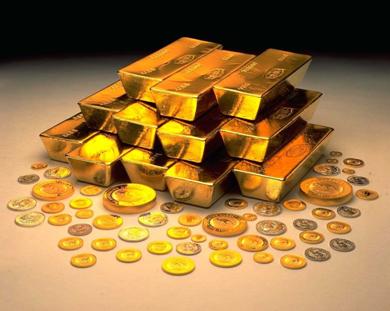If there are two things that get people of this country interested in economics, they are the price of onion and the price of petrol racing towards Rs 100 per kg or litre, respectively. Currently, the price of petrol is racing towards Rs 100 per litre in large parts of the country. In fact, in some parts, it has already crossed that level.
So, what’s happening here? Let’s take a look at this pointwise.
1) Take a look at the following chart, which plots the average price of the Indian basket of crude oil since January 2020.
 Source: Petroleum Planning and Analysis Cell.
Source: Petroleum Planning and Analysis Cell.
*February price as of February 18, 2021.
What does the above chart tell us? It tells us that as the covid pandemic spread, the price of oil fell, falling to a low of $19.90 per barrel in April 2020. It has been rising since then. One simple reason for this lies in the fact that as the global economy recovers, its energy needs will go up accordingly and hence, the price of oil is going up as well.
The other reason has been the massive amount of money that Western central banks have printed through the beginning of 2020. Oil, as it had post 2008, has emerged as a hard asset of investment for many institutional and high-networth investors, leading to an increase in its price. As of February 18, the price of the Indian basket of crude oil stood at $63.65 per barrel, having risen by close to 220% during the current financial year.
2) Now let’s look at the average price of the Indian basket of crude oil over the years.

Source: Petroleum Planning and Analysis Cell.
* Up to January 2021.
What does the above chart tell us? It tells us that the Narendra Modi government has been very lucky when it comes to the price of oil, with the oil price on the whole being much lower than it was between 2009 and 2014.
In May 2014, when Modi took over as the prime minister, the price of oil averaged at $106.85 per barrel. By January 2016, it had fallen to $28.08 per barrel.
Even after that, the price of oil hasn’t touched the high levels it did before 2014, in the post financial crisis years, which also happened to be the second term of the Manmohan Singh government.
A major reason for this lies in the discovery of shale oil in the United States. In fact, as Daniel Yergin writes in The New Map – Energy, Climate and the Clash of Nations: “In the autumn of 2018, though it was hardly noted at the time, something historic occurred: The United States overtook both Russia and Saudi Arabia to regain its rank as the world’s largest oil producer, a position it had lost more than four decades earlier.” This has been a major reason in the lower price of oil over a longer term.
The question that then crops up is why hasn’t petrol price in India seen low levels? The answer lies in the fact that between 2014 and 2021, the taxes on petrol, in particular central government taxes have gone up dramatically.
In short, the central government has captured a bulk of the fall in oil prices. Now when the oil price has gone up over the course of this financial year, the high-price of petrol has started to pinch.
3) Take a look at the following table. It plots the price of petrol in Delhi as of February 16, 2021 and in March 2014.

Source: https://iocl.com/uploads/priceBuildup/PriceBuildup_petrol_Delhi_as_on_16_Feb-2021.pdf
and https://www.ppac.gov.in/WriteReadData/Reports/201409231239065062686Snapshot_IOGD_MAR.pdf.
The above table makes for a very interesting reading. As of February 16, the price of petrol charged to dealers was Rs 32.1. Over and above this, the central government charged an excise duty of Rs 32.90 per litre on petrol. Add to this a dealer commission of Rs 3.68 per litre, and we are looking at a total of Rs 68.68 per litre.
On this the Delhi state government charged a value added tax of 30% or Rs 20.61 per litre. This leads to a retail price of petrol of Rs 89.29 per litre. Given that the state government charges a tax in percentage terms, the higher the price of petrol goes, the more tax the state government earns. The vice versa is also true.
Let’s compare this to how things were in March 2014. The price of petrol charged to dealers was Rs 47.13 per litre, much lower than it is today. On this, the central government’s tax amounted to Rs 10.38 per litre. The dealer commission was Rs 2 per litre.
Adding all of this up, we got a total of Rs 59.51 per litre. On this, the Delhi state government charged a value added tax of 20%, which amounted to Rs 11.9 per litre and a retail selling price of petrol of Rs 71.41 per litre. Interestingly, the state government’s tax was more than that of the central government at that point of time.
4) The above calculations explain almost everything. In March 2014, the price of petrol at the dealer level was higher than it is now, but the retail selling price was lower. Both the central government and the state government have raised taxes since then.
The total taxes as a percentage of dealer price now works out to 167% of the dealer price. In March 2014, they were at 47.3%. It is these high taxes which also explain why petrol prices in India are higher than in many other countries.
Of course, a bulk of this raise has come due to a rise in taxes charged by the central government. As mentioned earlier, the central government has captured a bulk of the fall in price of oil.
5) The calculation shown here will vary from state to state, depending on the value added tax or sales tax charged by the state government and the price at which petrol is sold to the dealers. States which charge a higher value added tax than Delhi will see the price of petrol reaching Rs 100 per litre faster than Delhi, if the price of oil continues to rise.

6) Of course, the governments can bring down the price of petrol by cutting taxes. In fact, four state governments have cut taxes providing some relief to oil consumers. But any substantial relief can be provided only by the central government. The trouble is that tax collections have fallen this year. Only the collection of excise duty has gone up by 54% to Rs 2.39 lakh crore, thanks to the higher excise duty charged on petrol and diesel.
The interesting thing is that the excise duty earned from the petroleum sector has jumped from Rs 99,068 crore in 2014-15 to Rs 2.23 lakh crore in 2019-20. The government has become addicted to easy revenue from taxing petrol and diesel. This year its earnings will be even higher than in 2019-20.
7) The central government also fears that if it cuts the excise duty on petrol and diesel, the state governments can step in and increase their value added tax, given that like the centre, they are also struggling to earn taxes this year.
Also, what needs to be kept in mind here is that the central government doesn’t share a good bit of what it earns through the excise duty on petrol and diesel with the states. This is because a bulk of the excise duty is charged in the form of a cess, which the central government does not need to share with the states.
Let’s take the overall excise duty of Rs 32.90 per litre of petrol currently. Of this, the basic excise duty is Rs 1.40 per litre and the special additional excise duty is at Rs 11 per litre. The road and infrastructure cess is at Rs 18 per litre (also referred to as additional excise duty) and the agriculture and infrastructure development cess is at Rs 2.50 litre. Clearly, the cess has a heavier weight in the overall excise duty.
8) One reason offered for the high price of petrol is low atmanirbharta or that as a country we have to import more and more oil than we did in the past. In 2011-12, the import dependency was 75.9%. This jumped to 77.6% in 2013-14 and has been rising since. In April to December 2020, this has jumped to 85%.
The explanation offered on this has been that oil companies haven’t carried out enough exploration activities in the past. Let’s take a look at the numbers of ONGC, the government’s biggest oil production company (or upstream oil company, as it is technically referred to).
The total amount of money spent by the company on digging exploratory wells in 2019-20 stood at Rs 4,330.6 crore. This had stood at Rs 11,687.2 crore in 2013-14. Over the years, the amount of money spent by ONGC on exploration has come down dramatically. This explains to some extent why the crude oil production in India has fallen from 37.8 million tonnes in 2013-14 to 30.5 million tonnes in 2019-20, leading to a higher import dependency.
Of course, not all exploration leads to discovery of oil, nevertheless, at the same time unless you explore, how do you find oil.
The reason why ONGC’s spending on exploration has fallen is primarily because the company has taken on a whole lot of debt over the past few years to finance the acquisition of HPCL and a majority stake in Gujarat State Petroleum Corporation’s (GSPC) KG Basin gas block. The money that ONGC borrowed to finance the purchase of HPCL from the government was used by the government to finance the fiscal deficit. Fiscal deficit is the difference between what a company earns and what it spends.
The borrowing has led to the finance costs of the company going up from Rs 0.4 crore in 2013-14 to Rs 2,823.7 crore in 2019-20. The cash reserves of the company are down to Rs 968.2 crore as of March 2020 from Rs 10,798.9 crore as of March 2014.
All this explains why the price of petrol is racing towards Rs 100 per litre. At the cost of sounding very very very cliched, there is no free lunch in economics. Somebody’s got to bear the cost.
It will be interesting to see if the central government continues to hold on to the high excise duty on petrol and diesel (whatever I have said for petrol applies for diesel as well, with a different set of numbers) leading to a high petrol and diesel price and lets these high rates feed into inflation in the process.
Keep watching this space.




